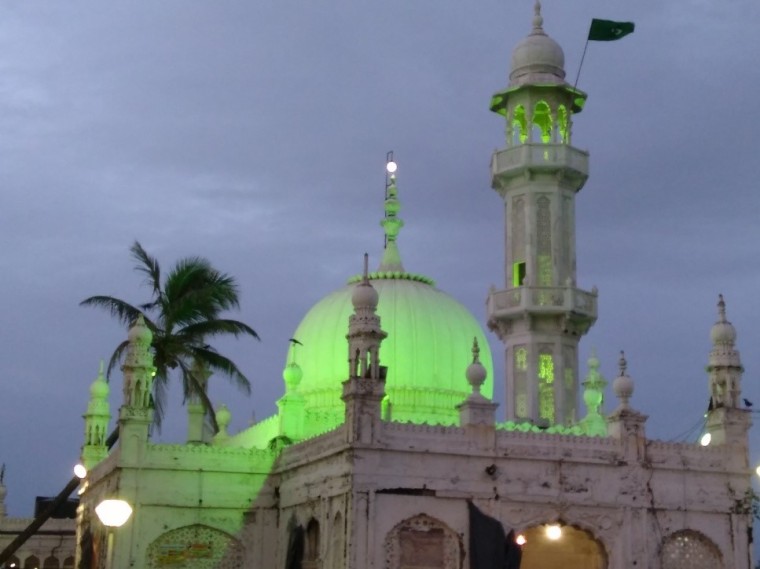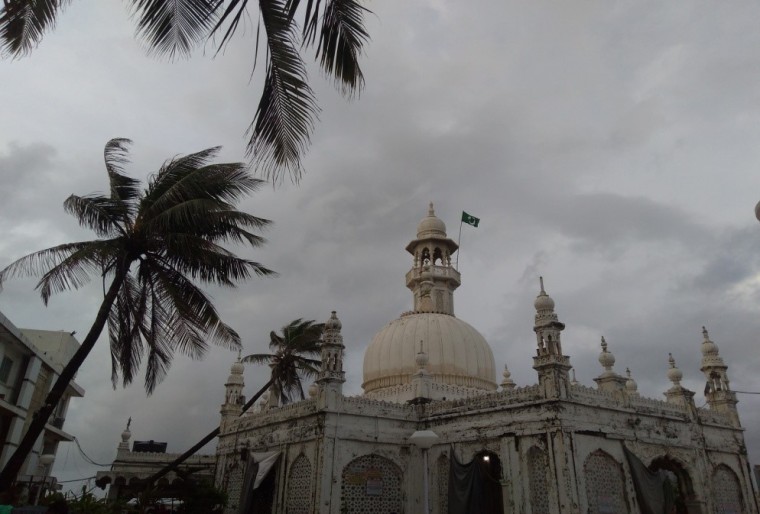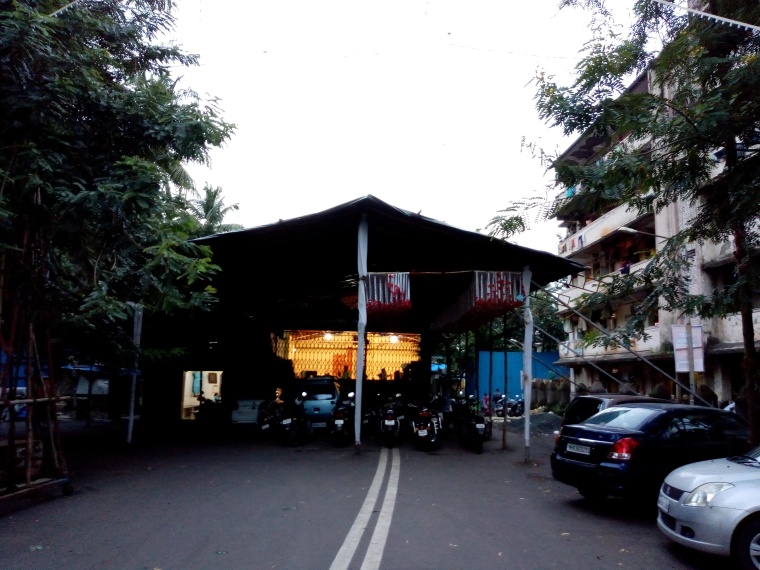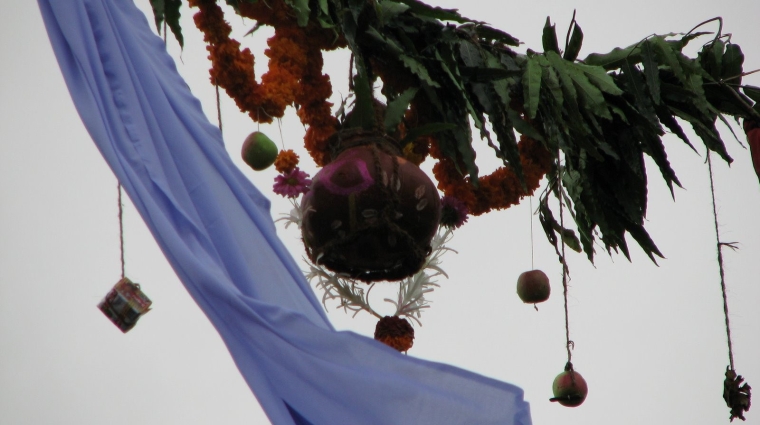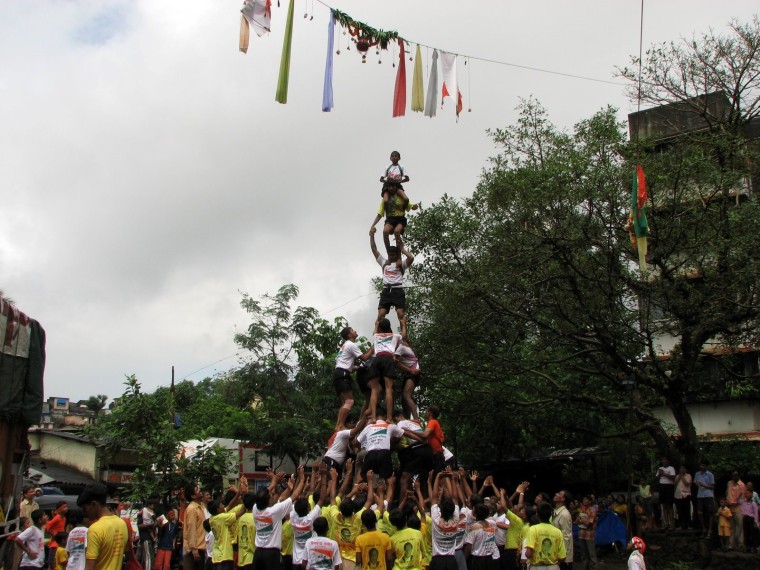An interview by Chintan Girish Modi

Rev. Corey J. Sanderson is the minister of Second Congregational Church, United Church of Christ, in Greenfield (Massachusetts). I first met him on a trip to the United States of America in October 2017 through a common friend who connected us because of our shared interests in interfaith dialogue. He is an adjunct faculty member at Northwestern Michigan College in Traverse City (Michigan) where he teaches philosophy, ethics, and world religions courses online, and is also an active leader in a number of interfaith activities. He identifies as a liberal, progressive Protestant minister, and is on the Board of Directors for the Council of American-Islamic Relations. We met again on his recent visit to Mumbai, which was part of a larger research trip to India. This conversation, over email, is an attempt to capture his experience of Mumbai as a city with abundant opportunities to explore inter-faith interactions as a source of peacebuilding in urban society.
When you think of Mumbai, what are the immediate associations that come to mind? What do you miss about the city? What are you relieved you don’t have to deal with?
Leaving Mumbai was a deeply emotional experience for me. While this was my first visit to the city, leaving it felt like saying farewell to a loved one. I didn’t expect to get all choked up in the cab ride to the airport but I did.
The first association I carry with me is the effortless generosity and exuberant hospitality of Mumbaikars. The people I met were so kind, and this made Mumbai feel very real to me. I had read Suketu Mehta’s marvelous book, Maximum City: Bombay Lost and Found, and so was half expecting more of a ‘gritty’ city vibe, but the overwhelming kindness of the people is what really defines Mumbai for me.
The second association I have involves the profound religious diversity of the city. Since religious studies is my area of interest and work, I savored as much as I could during my brief stay. The general inclusive and pluralistic social fabric of India is so unique. While inter-religious tensions certainly do exist, and are often exacerbated in and through political maneuvering, there’s a foundational level of comfort and respect for religious traditions from person to person.
I miss the mangoes! I greatly miss the cultural aspects of Mumbai – the food, music, art, language, dance, and social habits as well as my friends who live there. It may sound a bit odd, but I also miss the opportunity I had to continually reflect on my own privilege, values, and understandings of people and life. Being immersed in a radically different culture, and especially so in the crucible of Mumbai, helped give me a wider and deeper view of life. Being in Mumbai right before the monsoon season, I was also glad to be free of the oppressive humidity!
How many months has it been since you visited Mumbai? If I remember well, your visit coincided with the month of Ramzan/Ramadan? What was that experience like?
It has been four months since I was in Mumbai. Being there for Ramadan was spiritually inspiring and uplifting. I have a deep respect for the emphasis Islam places on the daily practice of the faith. One experience I had captures Ramzan and the importance of sharing in each other’s traditions.
It had been a long hot day. I was travelling alone and was exhausted by dinner time. I figured I’d stay in and relax. Yet as I scrolled through the ‘Events Near Me’ section of Facebook, I noticed an unusually large number of listings for ‘Mohammed Ali Road Street Food.’ Curious, I figured I should check it out. I honestly had no idea about what was waiting for me at the end of that cab ride.
It was a sea of people all up and down Mohammed Ali Road as well as spilling into the adjoining side streets. Every conceivable space was filled with Muslims cooking and buying the most amazing street food I’d ever seen or smelled. At one point, I was in the middle of the crowded street inching my way down the main road. This guy, about 10 meters away, yelled to me, ‘How are you liking this?’ I shouted back, ‘It’s amazing!’ As we reached each other, we gave each other a high five and locked hands. ‘Ramadan Kareem,’ I said to him. He said, ‘Thanks for being here.’ It was a perfect moment.
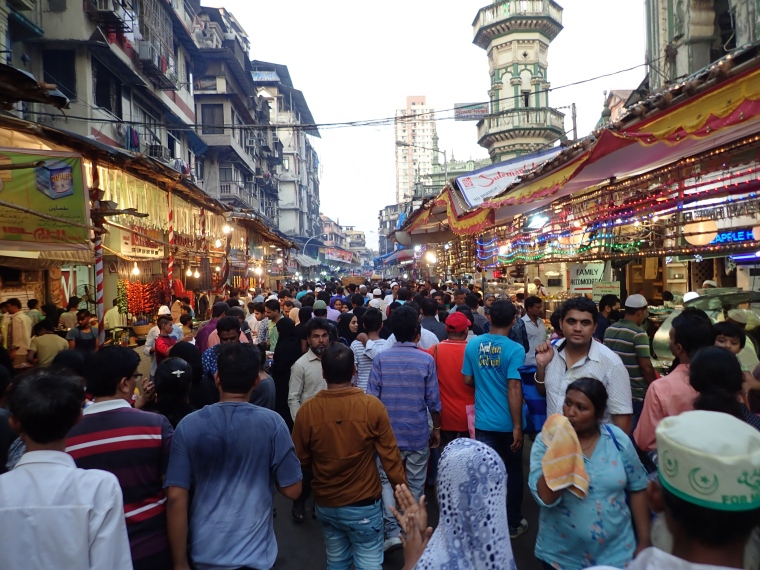
Once the call to prayer came from Minara Masjid, everything immediately slowed down. Shop owners closed down their stalls. People spread blankets on the ground, sat in circles with another, and broke their fast. This iftar experience was spiritually powerful as it highlighted the highly communal nature of the faith. Islam in the United States often picks up a more individualist flavor because of the hyper individualism that is generally in our society.
What made you include Mumbai on your India itinerary? Did you imagine that it would offer you something different from the other cities you went to?
After reading Maximum City: Bombay Lost and Found I just had to see Mumbai. I have always been drawn to paradox and Mumbai seemed to have it galore — beauty and ugliness, wealth and poverty, culture and crassness. Paradox often points to something higher or deeper and so I felt Mumbai would help me understand the psyche of India in a powerful way. I was right!
I had been reading a lot about the Hindu-Muslim riots in late 1992 and early 1993, and wanted to see those places. I’m less interested in the violence and more interested in the healing and peacebuilding that takes place afterwards. Being in those physical spaces helped make my studies feel more concrete and grounded.
The other reason I wanted to visit Mumbai was for the culture. I have loved Bollywood films for many years now and I am currently learning Hindustani Classical Music as well. Mumbai has such great art museums and architecture all around. I felt like the cultural dimensions of Mumbai couldn’t be found in other cities and places.
Which places did you visit during your stay in Mumbai? Which ones were most interesting, meaningful or fascinating for you?
Since I was primarily interested in the faith life of Indians, my main focus was seeing places of religious significance. I was able to visit most of the larger sites I wanted to see: Mahalaxmi Temple, Haji Ali Dargah, Mumbadevi Temple, Adishwarji Jain Temple, Banganga Tank, Elephanta Island, Saint Thomas Cathedral, both ISKCON temples, Siddhivinayak Temple, Babulnath Temple, the Vipassana Global Pagoda, Mount Mary Church, and many other smaller religious places I stumbled across in my journeys.
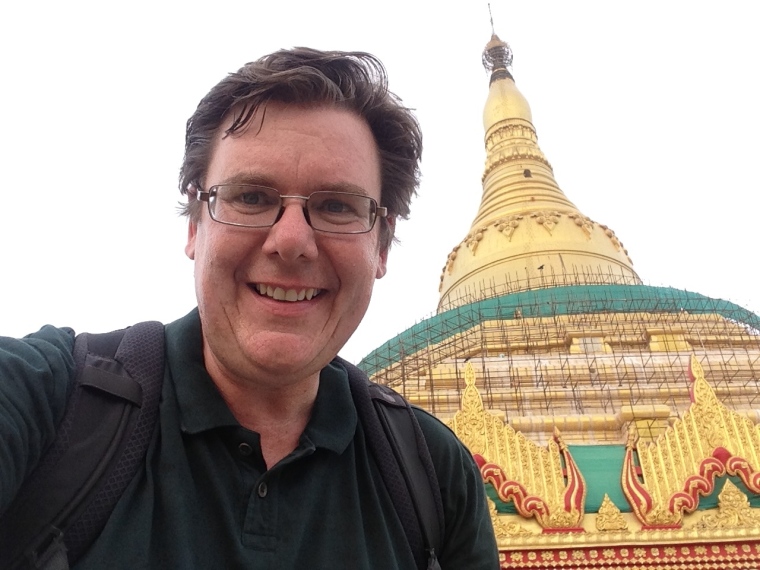

The most spiritually meaningful to me on a personal level were the Hindu temples. The main ones I went to – Mahalaxmi, Mumbadevi, Siddhivinayak, and Babulnath – had a magnetic pull for me. While my own tradition of Western liberal Protestant Christianity often emphasizes a personal, internal, contemplative reflection on the faith so as to strive to live it out in daily practice, the devotional temple life of Hindus offers a more public, communal, celebratory worship experience fueled by sight, sound, touch, and movement. I can sit through temple darshan for hours.
How did the Mumbai of your lived experience match up to or differ from the Mumbai of your imagination? I assume that Bollywood films might have shaped your expectations to a large extent since you watch them regularly.
Great question! I had been to India many years before this trip so I wasn’t carrying any naïve notion that Mumbai would be one huge Bollywood dance party. I do admit, however, that Bollywood themes and stories have certainly shaped my views of Indian life and culture. Myth-making is an important element of any society and Bollywood is part of that in some broad ways.
When younger generations move away from more formalized religious communities, the very institutions that carry forward the great myths and teachings about life, the important stories that orient us in this world can be lost. Even as an outsider, I often hear echoes of the Mahabharata and Ramayana in the background of movies and stories. Every culture needs new stories or at least new ways to tell the old stories. This is the same reason why I find Indian literature, generally speaking, to be so mythologically rich. I’m currently reading Akil Kumarasamy’s wonderful debut novel, Half Gods. It speaks powerfully to the universal existential experiences of family, identity, journey and purpose in the same way a good Hindi film does.
Given your long-standing involvement in inter-faith dialogue, what kind of insights did the Mumbai visit offer you? What did you take back to your work?
There’s a high level of ‘religious literacy’ in Mumbai, by which I mean people seem to know a good deal about religious traditions other than their own. This is something we don’t have as much in the United States. Religious literacy is so important because religion is a repository for values and ethics. This is what shapes how people live in the world. Knowing about each other’s spiritual traditions is important in helping us understand what people believe and why they do what they do.
Many people I spoke with commented that neighbor to neighbor, people of different faith backgrounds usually get along great. Yet when politics gets involved, or the media spins a story one particular way, things can quickly become distorted. That’s when blame gets placed, anger flares up, and violence can occur.
While religion is often a major force in shaping people’s identity, Mumbai helped me glimpse at how even the culture can carry along some of these ideals and practices. For instance, Indian hospitality is utterly amazing. I have never experienced anything like it. This unbounded care for the stranger springs from religious roots, yet hospitality has become so enculturated that even non-religious people practice it as well. It has, in essence, become part of the Indian psyche. I don’t see this happening in the United States, as religion is often divorced from culture.
I especially enjoy exploring new ways people are choosing to being spiritual religious.

Can you be Buddhist and still Hindu like Ambedkar? How did the melting of wax figurines start at Mount Mary? Are multiple religious identities more frequent and meaningful to people? Along the lines of Osho and ISKCON, why are new movements like Brahma Kumaris and Art of Living speaking to people? Syncretism, a blending of religious practices, has a long history in India. Yet the idea of divided separate religions, especially after Partition, seems to be more of a newer emphasis. These are a few topics I keep exploring with people in my church work, my teaching, and even in my wider community engagement.
If you could visit Mumbai again, what aspects of faith would you like to research? Which shrines would you like to pay a visit to? What rituals would you like to participate in?
On my next visit, I want to focus more on some of the Sufi shrines and other related sites. While I made it to Haji Ali Dargah, I would love to learn much more about how non-Muslims understand and revere Sufi saints. The great saints certainly reached out and brought in the marginalized, making it easy for all people to revere them, but I would like to know more. I would also love to explore how Muslims and Hindus have supported each other during their religious festivals.
How did your experience in Mumbai compare with your experiences in the rest of India? It holds the reputation of being cosmopolitan but also carries the scourge of violence between religious communities.
Before arriving in Mumbai, I spent time in Delhi, Amritsar, Kolkata, and Varanasi. Mumbai was certainly more cosmopolitan in terms of social status, wealth, and culture when compared to other areas I had visited. The rise of western influence in Mumbai is very evident. While this made it a bit more comfortable and familiar in some ways, the western influenced parts were a little less of what I was looking for.
What can India and USA learn from each other in terms of how inter-faith dialogue is operationalized in local communities and at the level of public policy?
I think that we in the United States have far more to learn about inter-religious dialogue and cooperation from people in India than the other way around. Religious diversity is still very new to us on some level. After the 1965 Immigration and Naturalization Act was passed, people began coming to the US from other countries in much higher numbers. They brought with them their food, dress, culture and religions.
For many years, the people who came to the US practiced their religions quietly and often behind closed doors. Then, as they began to meet others, they would start creating small communities. Through the years, temples and mosques would begin appearing in the cultural mindset. Of course, the US already had religious diversity. There were the traditions of the First Peoples and many of the enslaved Africans who were brought here were Muslim. There were a variety of Christians, and some Jews as well and a stream of Chinese from the early part of the last century. The challenge we have in the US is how we create a religiously diverse, pluralistic society. We have the diversity already but we haven’t learned to really live with each other’s traditions the way people in India have.
Since each of our two countries enters interfaith dialog from a different majority religion starting point, Hinduism and Christianity, the way it proceeds actually varies a great deal as people are starting from different places. And locations matter too. Interfaith conversations can happen easily in smaller towns and more rural village settings in India, where people are neighbors in close proximity, but it is much harder to find that in Mumbai.
There’s still so much I need to learn, so I can’t wait to get back to India for more!
Chintan Girish Modi is a writer, peace educator and freelance journalist who lives in Mumbai. He works with school teachers and students on addressing Islamophobia, misogyny and homophobia in the classroom and in the wider society, apart from strengthening India-Pakistan dialogue through his initiative Friendships Across Borders: Aao Dosti Karein. He tweets @chintan_connect

